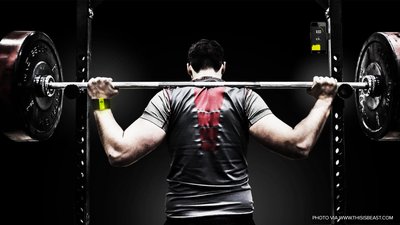Suppose someone told you that a special "smart" shirt would enable you to lift more weight? Would you put this magical shirt on and head straight to the gym? Or would you consider it cheating? Or would you consider it cheating…and still wear it? Be honest.
What might have once seemed like a hypothetical question is becoming more real every day as designers and engineers develop electrically-powered super fabrics. Initially conceived of as a way to help disabled people move their limbs more naturally, these new garments, and other wearable technology, may soon help people of all physical abilities lift more weight, run faster, and take their athletic performance where it probably had no chance of going otherwise.
One of the epicenters of this new technology is Sweden, where researchers have developed fabric that, when given an electric charge, is able to lift very small amounts of weight. That may sound silly, but it represents a pivotal milestone on the road to create "soft robotics." Unlike the sometimes clunky prosthetics that use mechanical means to move limbs, "fabric exoskeletons" made possible by soft robotics could make externally assisted movements more lifelike, natural, and, ultimately, powerful than ever.
Here are a few of the wildest innovations that may soon be landing in a gym near you.
The Rise of the Electrified Bodysuit
Like something out of a superhero's closet, bodysuits made of futuristic fabrics emerge from the complex intersection of microelectronics, artificial intelligence, and materials science. Leaving spandex far behind, these garments are constructed out of new materials such as carbon nanotubes, shape-memory alloy wires, and even tiny nylon "muscles."
It's all very high tech and not ready for prime time. But across the U.S. and around the world, in laboratories large and small, entrepreneurs are bringing fitness-related products to market that apply these new technologies in a mind boggling number of ways.
No, these engineers on the edge don't yet openly promise that these bodysuits will increase your bench. But the fabrics and the sensors embedded in them already provide valuable information to help wearers improve their form, develop their sense of balance, optimize their performance, and monitor their health. And that, in the long term, can definitely boost your strength.
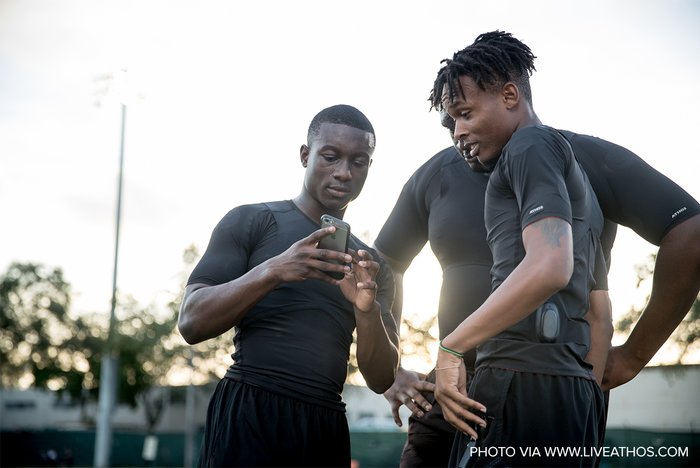
Chinese researchers were among the first to apply this new research to create "body sensor networks," another name for tight-fitting bodysuits made from these new fabrics. The names of the sensors they use are dizzying—photoplethysmography, anyone?—but the sensors themselves are designed to provide tangible practical feedback.
For one, the sensors measure the wearer's oxygen saturation levels and changes in arterial blood pressure. Electromyography sensors capture the electrical activity produced by skeletal muscles. Electrocardiogram sensors monitor heartbeat. All of this data, and more, is sent to a central "core" that wirelessly relays the information to smartphones and external computers for more analysis.
Athos was among the first to market a consumer version of the body sensor network. Its smart-training apparel sensors capture biometric data including how well your individual muscles are firing, how much each muscle is contributing to a movement, whether your movements are balanced between your right and left sides, and even how efficiently you're breathing.
The Athos training shirt comes with 14 embedded sensors and a core that transmits data to a smartphone via Bluetooth. The matching Athos pants contain 8 sensors. In addition, the fabric includes accelerometers that measure body movement in multiple planes, magnetometers that compare rib cage and abdomen movement to calculate breathing efficiency, and pulsometers and blood-pressure sensors that track vital statistics.
An Athos app translates the data into visual representations that can be viewed in real time on a smartphone as you work out, or after your workout on a computer, where you can more closely analyze the results. The complete product can generate recommendations on how you can change the way you move and breath to improve performance, avoid injury, and delay the onset of fatigue.
Neither Athos nor any other commercial product on the market to date features the kind of electrically-charged fabric designed to enhance physical performance, but it feels like that can't be far behind.
Sensors and Stick-Ons to Optimize Posture and Performance
The Australian design company Wearable Experiments has a more ethereal goal in mind for its body sensor network. The company's Nadi X pants detect muscle tension and transform this data into vibrations that silently alert the wearer to imbalances in their yoga poses.
Rather than capture and export the biometric data for further analysis, the Nadi X suit is designed to provide immediate feedback to improve the wearer's performance in that instant. The goal is to help the wearer perform better yoga postures and movements.

The U.S.-based company Somaxis has developed Cricket sensors, which are like training suits without the suits. You can attach the adhesive sensors anywhere on your body to measure activity in your muscles, heart, and brain. You can also use the system to measure your posture and your movement patterns, guide your recovery from repetitive-strain injuries, and even discover where in your body you are holding stress.
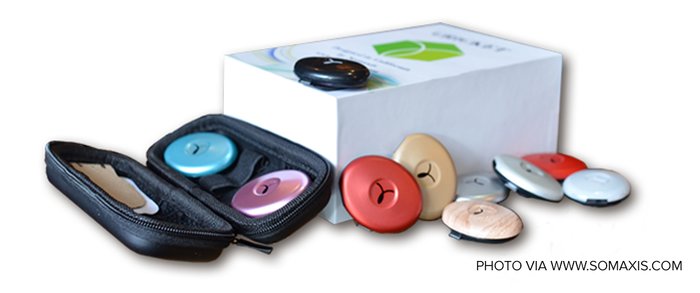
As with many wearable products, Cricket sensors are used in combination with a phone app and a web portal where you can view and interact with your biometric information. So far, purchasers have used the system for physical and occupational therapy, sports science, and physical rehabilitation.
Fitbit, Meet Fit Ink
This intersection of microelectronics and new materials has spawned dozens of companies that are embedding sensors in everything from shoe inserts to tattoos.
Rotex, a U.S.-based biotech company that emerged from Chinese research, takes the concept of wearables to the max by creating disposable "e-tattoos" that bind with the skin. They collect real-time measurements including EKG activity, respiration, temperature, blood pressure, blood oxygen saturation, and hydration.

At present, the tattoos are used primarily by medical professionals to monitor patients' vital signs without the usual intrusive tangle of wires and cables. They are designed to last as long as a week, and can be worn while showering or bathing. Some researchers are even experimenting with subcutaneous electronics in the form of tattoo-like sensors made with carbon nanotubes that are injected below the skin.
The possible applications of this technology seem limitless. Researchers envision epidermal electronics that could, for example, sense if a person's arterial blood vessels are stiffening—a warning sign of an impending heart attack and other cardiovascular events. Once the sensor detected the stiffening, it would signal the release of drugs into the person's body to stop a heart attack before it happens.
Wearables Just for Lifters
Many new wearable products are designed specifically for use with resistance training. For example, Delta Gloves by U.S.-based company PureCarbon contain three pressure-sensor circuits per glove that record exercises, sets, reps, and weights lifted. They continue to capture data whether you're using free weights, machines, or bodyweight. The current generation of sensors are capable of detecting up to 90 pounds of force per sensor, or 270 pounds per hand.
Delta Gloves use artificial intelligence and your workout history to build new customized routines. Paired with headphones, the system can talk you through your workout step by step, telling you which exercises to do, how many sets and reps, and how much weight to use. Haptic motors in each glove vibrate to let you know that you have finished a set or that your rest time is over. A Delta smartphone app enables you to review your history of specific exercises, and track and compare your workouts in terms of power and other performance markers.
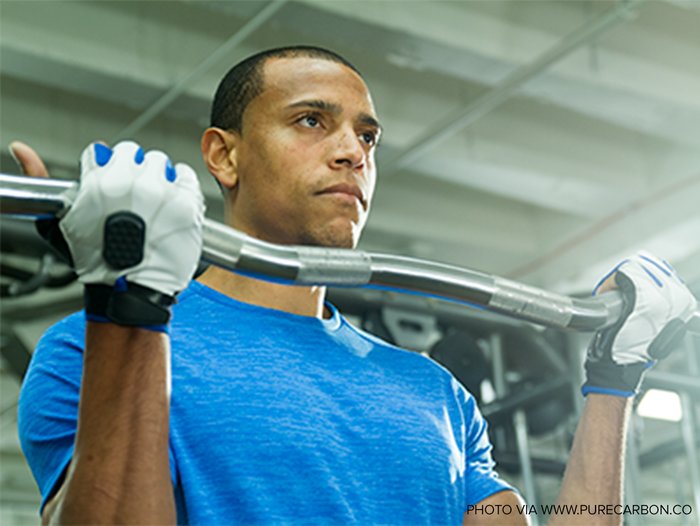
The Beast Sensor falls into the more traditional style of wearables: a wrist band. The sensor is attached to a magnet, which enables you to remove it from the wrist band and attach it to a plate on your barbell or machine. The sensors transmit data to a smartphone app that enable you to review the speed and power of each lift in real time, gauge your performances set by set, develop training goals, access advanced movement analytics to assess each lift, and create workouts that can be followed by individuals or groups of users.
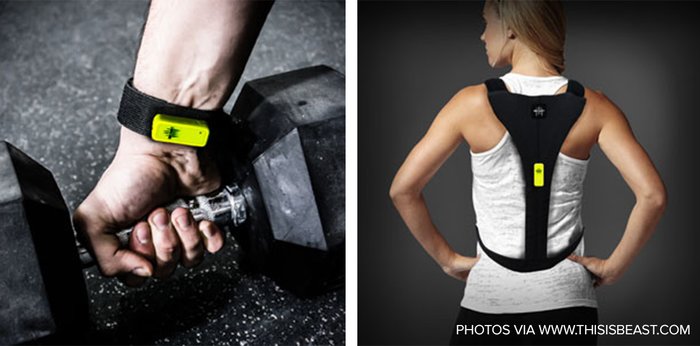
Using the record of your lifts and the intelligence designed into the system, the Beast Sensor can help you discover your correct training volume, decide if you're overtraining, choose the range of weights that will best help you reach your own personal goals, and answer a range of other workout-related questions you'd likely struggle with on your own.
These two products are definitely not alone in the market at this point, either. Similar products, each with their own unique angle, include Gymwatch, Moov, Push, BSXInsight, the LEO Thighband, Moticon intelligent insoles, and Wavelet Health.
Where is the Line Between Human and Machine?
Ever since the advent of steroids and other performance-enhancing drugs, society has had to deal with the question of what constitutes unaided human accomplishment. These new smart fabrics won't make it any easier to draw that line. But that hasn't ever stopped us from pushing it.
Depending on your perspective, there may not be a valid reason to electrically improve the performance of fully functioning human beings. But the possibility of helping people with physical disabilities walk or throw a ball or read a book is reason enough to push the interface between the human body and increasingly smart technology. And if you think the advances will be limited to that demographic, well, you're dreaming.

